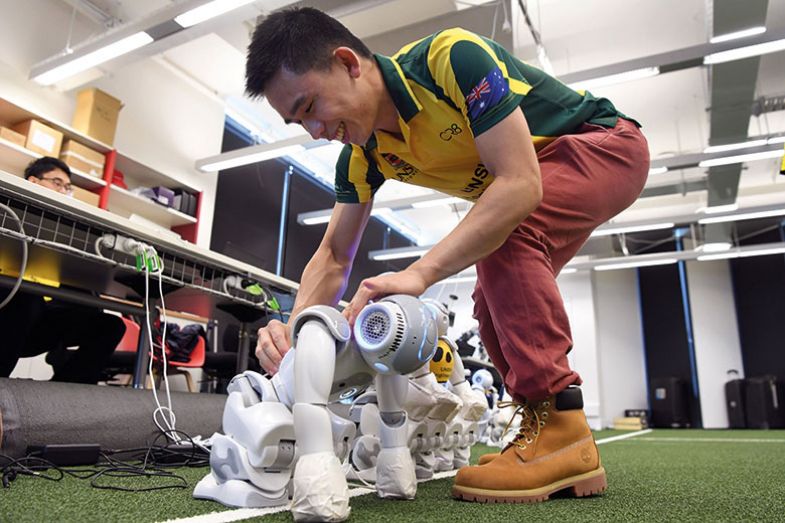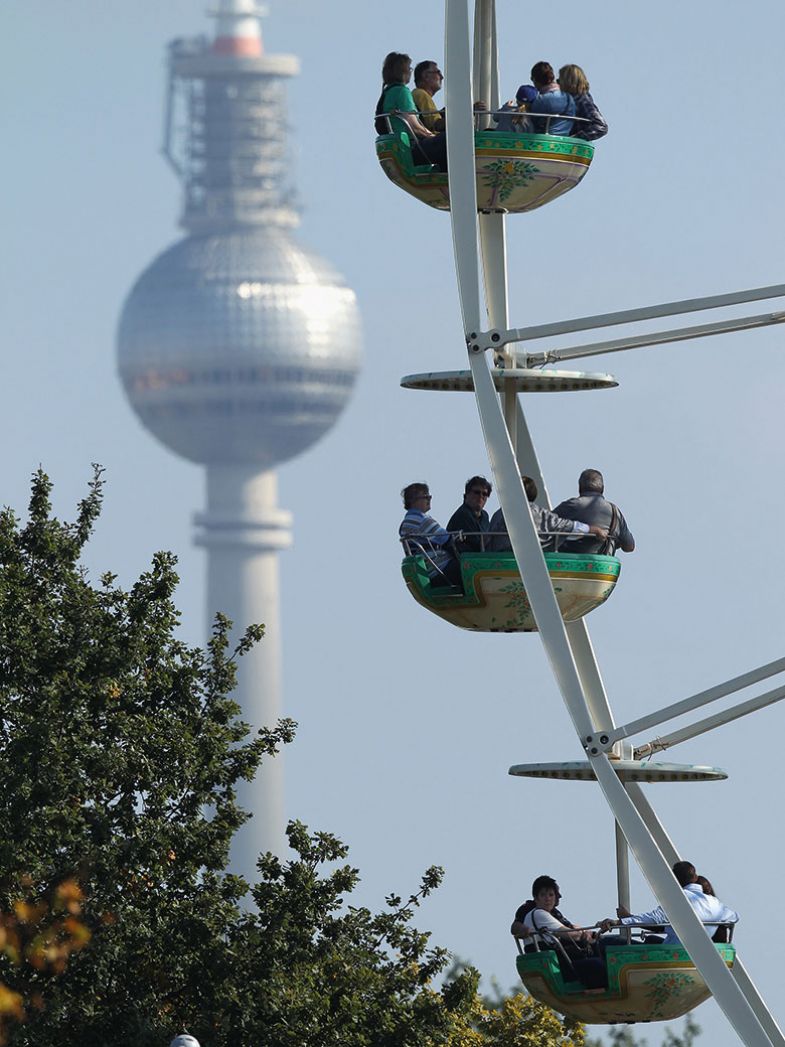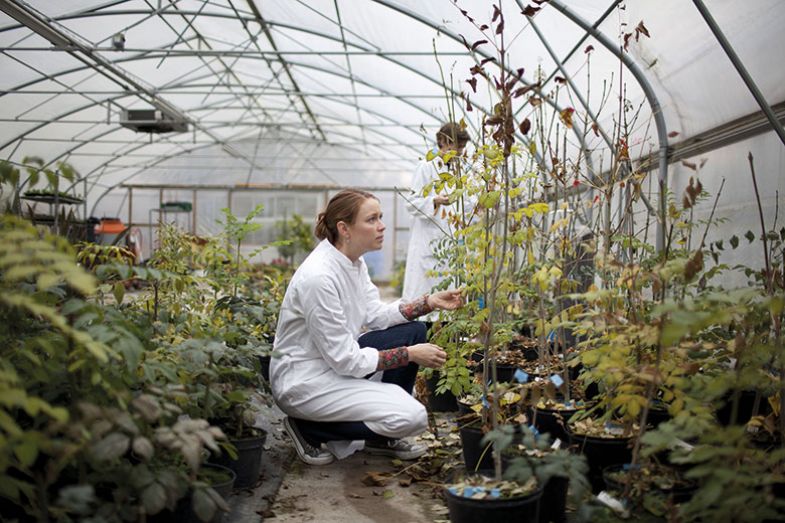Browse the full results of the World University Rankings 2020
In many regards, global higher education is a sector that has grown considerably in recent years. Between 2000 and 2014, the number of university students across the world more than doubled to 207 million, while the global higher education gross enrolment ratio increased from 19 per cent to 34 per cent, according to a paper published by the United Nations Educational, Scientific and Cultural Organisation.
Alongside this expansion in student numbers, many universities are producing more research publications per academic each year in an ever increasing number of fields; establishing more international partnerships; building more infrastructure; and securing more funds from a rising number of sources.
Global strengths
This map shows the distribution of universities in the ranking, with the colour representing institutions’ overall score. The outlined circles are the new entries in 2020.
Indeed, it is easy to assume that more is better when it comes to higher education and university performance. But such a view is challenged by just a cursory glance at one of the world’s leading universities.
The California Institute of Technology (Caltech) has just 349 scholars, 2,240 students and six academic divisions. Contrary to many of its counterparts, its faculty has grown by only one member of staff per year for the past 25 years.
“We have a somewhat different model than our peers in that we actually don’t try to grow,” says its president, Thomas F. Rosenbaum.
“We try to get better but not bigger. What that means is that we are constantly trying to identify areas where Caltech can be a world leader. We put big bets on those areas, we devote a lot of resources to them and given the constrained size then we’re constantly asking what do we do and what don’t we do.”
It’s a strategy that has paid off. Caltech has risen three positions to second place in the Times Higher Education World University Rankings 2020, after an improvement in its score for international staff. This international boost means it is now one of just two institutions in the ranking to achieve a score of over 80 out of 100 in all five areas underpinning the methodology: teaching, research, citation impact, knowledge transfer and international outlook. The other is Massachusetts Institute of Technology in fifth place (down from fourth last year).
Rosenbaum attributes Caltech’s strong performance across the board to both structural and cultural features. As well as being small and identifying “big problems that we focus on”, the university actively encourages interdisciplinarity and collaboration.
“Although we admit graduate students in various areas, once they get to Caltech they can work in any laboratory, with anyone they want, without any bureaucratic obstacles. So you have research groups that have mechanical engineers sitting next to computer scientists sitting next to biologists,” he says.
Rosenbaum admits that critical mass could be seen as a drawback of the Caltech model – “if you’re a faculty member and you want to talk to six or seven people who do exactly what you do, we’re not a good place” – but he says that this issue is largely mitigated by the fact that all the departments are small and that staff can, and do, interact.
“The small size, the reason we don’t grow, is because we really want to make sure that people talk to each other. It’s a trade-off in the sense that with more people you can do more things. But there’s an intellectual rigour to thinking about what you want to do and there’s this intimacy and collaboration that grows out of being small,” he adds.
It is also not unusual for academic staff at Caltech to switch fields if they have the skills to solve a problem in another department or division.
“We have an environment where people are encouraged to just go and switch and do that, even though there are opportunity costs,” Rosenbaum explains. “Part of that is having flexible funds that allow people to get established in new fields and then develop enough of a track record that they can then generate external funding.”
On the educational side, Caltech, which was number one in the ranking from 2012 to 2016, has a low student-to-faculty ratio, which exposes students to many different areas of science and engineering before they specialise and enables every student to conduct research.
“There’s a strong consensus on campus that we don’t want to get much bigger because we would lose what makes Caltech special, even understanding that there are then certain areas that we can’t compete in,” Rosenbaum says.
While Caltech’s anti-growth model is unusual, it is notable that the top three US universities in the ranking are all historically technology-focused institutions; alongside Caltech and MIT, Stanford University is ranked fourth (down from third last year). They sit among the UK’s top all-rounders: the University of Oxford is number one again, while the University of Cambridge is third (down from second).

However, while these nations still rule the top of the table, data from the past five years suggest that they are steadily declining.
The US has 60 institutions in the top 200 of the table, down from 63 in 2016. The UK has faced an even bigger decline in terms of representation, with 28 universities in the top 200, down from 34 four years ago. In the past year, 18 of these 28 have dropped by at least one place.
These falls have coincided with the rise of China, which is now home to the top two universities in Asia for the first time. Tsinghua University is still number one in the continent at 23rd place overall (down from 22nd), while Peking University has risen seven places and overtaken the National University of Singapore (NUS) to claim second place in the region and 24th place overall. NUS is now 25th (down from 23rd).
Peking’s rise is due to the university achieving higher scores in the three income per staff metrics, as well as the publications per staff measure.
Overall, China’s universities have improved in the areas of citation impact, share of international staff and share of international co-authorship over the past year, driven by higher levels of funding. China is the fourth most-represented nation in the list for the fourth year in a row, with 81 institutions, compared with the UK’s 100, Japan’s 110 and the US’ 172.
Australia is another strong performer. The country has a record 11 representatives in the top 200 this year, up from nine last year and eight in 2016. The Australian sector as a whole has improved on almost all 13 metrics underpinning the ranking, with PhDs awarded per staff (where its score was flat) the only exception.
Ha Wei, associate professor and associate dean of the Graduate School of Education at Peking University, says that China’s excellence initiatives have “poured billions of US dollars” into select groups of universities, while “talent attraction programmes” have also helped the institutions improve.
The latest Double World Class project, which was launched in 2015, includes a “monitoring and evaluation system to make it more results-oriented”, he adds, meaning that “those who are deemed less efficient in using the resources will be removed from the list of beneficiaries”.
“I believe the upward trend for Chinese universities will continue,” he says.
Nick Fisk, deputy vice-chancellor of research at UNSW Sydney, which is ranked 71st (up from joint 96th last year), attributes the university’s rise to its significant engagement with China.
The university’s teaching and research reputation both rose significantly this year, as reflected by the institution featuring in the top 100 list of the World Reputation Rankings for the first time in July. Fisk says that UNSW Sydney received significantly more votes from Chinese academics working in engineering and technology fields, clinical and health experts in the rest of Asia and Australian scholars in business and economics.
“Reputation has often been a lagging indicator – that’s why it favours the really old established universities – and it does seem that this order is being challenged a little bit by the rise of STEM subjects, the rise of the Asian powerhouse universities and by the shifting generations of academics, as the seniors move on and the youngsters rise up,” Fisk says.
A recent THE analysis of the latest reputation data found that young academics are more likely than their older peers to hold new, Asian or technology-focused universities in high regard.
UNSW was the first overseas partner for the Chinese government’s Torch programme, which aims to bring together businesses, universities and research organisations in science and technology to drive innovation, Fisk says. Meanwhile, a quarter of the university’s 60,000 students are from China, while more than half of its staff are born abroad.
“Australia is a pretty attractive country for engaging with China at the moment,” he adds. “Thirty per cent of our trade is with China, far more than any other country. We’re reasonably stable politically, unlike some of our English-speaking major competitors. It’s an attractive place to live. We’ve not had a recession. And that’s really helped attract staff who want to benefit from the quality of the science in this country but also the proximate interactions with the growing powerhouse that is Chinese science and Chinese universities.”
A recent analysis by the Australia-China Relations Institute at the University of Technology Sydney found that China is on the verge of becoming Australia’s most prominent research partner after journal articles co-written by academics in the two countries surged in quantity and quality. It concluded that China will overtake the US in the production of scientific papers co-authored with Australian researchers this year.
Fisk says that UNSW Sydney’s data reflect this broader trend. In 2017, China overtook the UK as the university’s second largest collaborator for international publications, and the Asian country looks set to overtake the US on this measure “in a couple of years”. In total, around a third of its publications are co-authored with an international collaborator and 13 per cent are co-authored with a collaborator from China.

Nanyang Technological University, Singapore is another riser. The institution has climbed three places to joint 48th, its highest ever rank, largely due to an improved research reputation score. The university was ranked 55th four years ago and 174th when the current methodology began in 2011.
A spokesman at the university says that its rise reflects its “focused and long-term investments and commitment to excellence in education, research and innovation”, helped by generous funding from the Singapore government.
“NTU’s pioneering efforts to introduce flipped classroom pedagogy, technology-enhanced learning and other improvements to the learning environment have delivered results,” he says, while technologies such as artificial intelligence, robotics, machine learning, 3D printing, and big data are all areas where “in the last 10 years, NTU has emerged as a global leader in terms of new knowledge and the translation of research into industry or societal applications”.
He adds that corporations such as Alibaba, HP and Volvo Buses all now have a physical presence on the university’s Smart Campus, “which is a living testbed for advanced technologies and innovation”. Last month, Rolls-Royce entered into its second five-year partnership with NTU in a joint corporate lab with a combined investment of S$88 million (£52 million) and the institution’s work with Volvo Buses is developing driverless electric buses that will soon be piloted on the institution’s campus.
Perhaps then it is no surprise that the 28-year-old university has rapidly emerged as a magnet for global talent; the institution’s new presidential postdoctoral fellowship programme, launched in 2018, received 894 applications this year for only 12 positions.

Germany is another nation that has improved its standing over the past five years. While this year’s results present a mixed picture for the country when compared with last year, the longer-term trend is much more promising. There are 23 German universities in the top 200 this year, up from 20 in 2016. The average overall score for these institutions increased from 58.9 to 60.8 out of 100 during the same period.
Peter-André Alt, president of the German Rectors’ Conference, says that the “hallmark” of the German higher education system is that while it does not have a “small group of outstanding universities”, as is the case in the UK and US, it has a “relatively broad and strong group of universities which are among the best 200 worldwide”.
He believes that Germany’s rise is “closely connected” to the government’s Excellence Initiative, which ran from 2005 to 2017 and provided additional funding for graduate schools, clusters of excellence (internationally competitive fields of research at universities and university consortia) and institutional strategies. The latest iteration of the programme, named Excellence Strategy, provides funding for clusters of excellence and selected “universities of excellence”.

Alt says that while the level of available funding is “comparatively small”, the scheme has enabled German universities to attract international staff and collaborate more internationally, by providing “additional space for action” to develop new strategies, take more notice of rankings and implement improvements, including launching collaborative research centres.
“Many of the Excellence universities have employed people with expertise in analysing rankings – they didn’t do this before. They are part of strategic teams in the universities and this played a key role in this process,” he says.
German universities have also become more successful at securing European Union research grants after developing incentives for academics to submit proposals, and supporting staff in this process.
“It’s strategic thinking, it’s analysing the general market in terms of reputation, it’s focusing on the international dimension. All these elements were missing in the German system in around 2000 and now they’re part of the system,” Alt says.
He adds that half of all German universities receive additional funds through the Excellence Strategy, which he sees as a “success”. And even institutions that miss out on this income “are very much participating in the new culture”.
But despite Germany’s improvement, Alt says it is unlikely that the reforms will elevate one or two of the nation’s universities to the top of the rankings.
“I think we will make significant progress in the coming years [but] there are many universities that invest much more in infrastructure, equipment and human capacity. It’s simply not our aim to compete with this approach,” he says.
Elsewhere in Europe, Denmark’s two leading universities have made gains. The University of Copenhagen is edging back towards the top 100 (where it last featured in 2016) after climbing 15 places to 101st, while Aarhus University has jumped eight places to 115th.

Both universities’ research and teaching reputation scores improved this year, while Aarhus’ citation impact score was also higher.
Danish universities have faced annual 2 per cent declines in funding since 2016, but the newly elected Social Democratic Party has pledged to “stop the savings”.
Jasper Steen Winkel, director of communications at the University of Copenhagen, attributes the institution’s progress over the past decade to its focus on attracting top-level research staff. The number of international researchers at the institution has increased from 18 per cent to 38 per cent over the past 10 years, and the university has established a tenure track system.
Copenhagen also invested €55 million (£51 million) in an Excellence Programme for Interdisciplinary Research, which ran from 2013 and 2017 and spawned 18 interdisciplinary projects led by “star researchers”, he says.
“From an international perspective, a self-funded programme of this size where the leadership has proven its capability to prioritise the university’s free and unrestricted funds is outstanding,” Winkel says.
“The programme has paid off by strengthening the university’s ability to attract additional external funding. An indicator is our ability to attract EU funding; the University of Copenhagen is in the top five in Europe [for Horizon 2020 income].”
Winkel says he hopes that the new Danish government will make a “new long-term plan for research” in the country to “tackle some of the grand challenges and Sustainable Development Goals such as climate change and global health”.
Back in North America, Canada has had a strong year, with six of its seven top 200 representatives rising up the table this year. Its flagship, the University of Toronto, climbs three places to join the top 20 at 18th place – its highest position since 2011 – owing to improved scores for research income, research reputation and doctorates awarded. The University of British Columbia rises three places to 34th owing to boosts to its teaching and research reputation scores.
However, two Canadian universities have fallen out of the top 200 this year.

One aspect that unites many of the country’s universities is their improving global outlook. Of the 18 Canadian universities in the top 500, 15 have higher scores in the international pillar, which measures share of international students, staff and research publications.
Many higher education commentators have highlighted that Canada is benefiting from the US’ increasingly hostile immigration policies, while some individual scholars who have recently moved to the north of the continent have cited escaping the Trump administration as a factor.
It is an issue that is of great concern to Caltech’s Rosenbaum, who highlights that “free flow of people and ideas [is] essential to the success of American higher education”.
“Thirty-five per cent of Nobel prizes awarded to Americans in the hard sciences are for Americans who were born abroad. Forty-five per cent of our faculty at Caltech were born outside the US. So if you eliminate this movement of people you have much more difficulty competing with leading institutions across the world. I think there’s a real danger there,” he says.
He adds that Caltech has not yet seen the “full effects” of the changing policy environment, but “visa issues are more difficult” and “people who come here have less expectation that they might stay”.
“We continue to get a broad spectrum of people applying to us from diverse areas and backgrounds. But the political climate is one where that may not last sufficiently long…[and] of course you never know who is not applying,” he says.
“There are more and more viable options around the world at leading institutions and the competition for talent at the top of any industry is always extreme. So you can be affected very quickly in that fashion.”
And while changing political winds can rapidly influence the movement of the world’s leading scientists, Rosenbaum warns that it takes much longer to regain the trust of these scholars.
“If the perception that America is a welcoming place to do leading science turns around, if that perception changes, it can take a long time to regain your footing,” he says.
Register to continue
Why register?
- Registration is free and only takes a moment
- Once registered, you can read 3 articles a month
- Sign up for our newsletter
Subscribe
Or subscribe for unlimited access to:
- Unlimited access to news, views, insights & reviews
- Digital editions
- Digital access to THE’s university and college rankings analysis
Already registered or a current subscriber? Login















